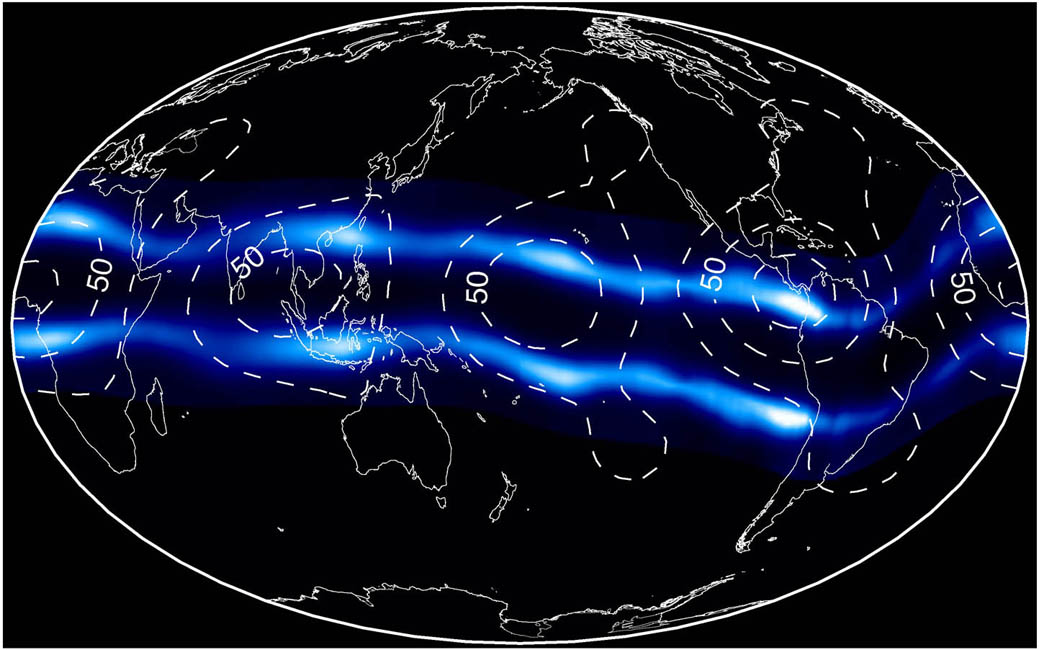In this series we are exploring the weird and wonderful world of astronomy jargon! You’ll find today’s topic absolutely sizzling: the ionosphere!
In the upper reaches of the Earth’s atmosphere, the intense UV and X-ray radiation from the Sun bombards molecules and atoms, causing them to split apart. The resulting positively charged nuclei are called ions, and the free electrons are called…free electrons. These charged particles behave differently than normal neutral molecules, especially when it comes to how they interact with radio waves.
This process only happens in the upper atmosphere because the intense radiation from the Sun has a hard time reaching lower altitudes. But once you reach about 30 miles (about 48 kilometers) up, the proportion of ions jumps way up, and you’ve reached the innermost later of the ionosphere.
There are several layers to the ionosphere, but each layer doesn’t have a strict boundary, and the layers change over the course of the day, over the course of seasons, and over the course of the Sun’s 11-year sunspot cycle.
The innermost layer of the ionosphere is called the D layer, and it stretches from about 30 miles (48 km) to 56 miles (90 km) above the Earth. However, the D layer only appears during the day, when the Sun is able to fully blast the dayside of our atmosphere.
The next two layers are the E layer, stretching from 60-90 miles (90-150 km), and the F layer, which goes from 90-300 miles (150-500 km). The E layer sticks around during the night, but is much weaker. During the day the F layer splits into two distinct layers.
The ionosphere has the ability to reflect and refract radio waves. This is very useful for global radio communications. Usually, the ability to send or receive radio signals is limited to the line of sight between the sender and receiver. Once you’re over the curve of the Earth you’re out of luck. But if you aim your radio signal up, it can bounce off of the ionosphere and reach your destination. This is how radio pioneer Gugliemo Marconi was able to achieve the first trans-Atlantic radio message in 1901.

